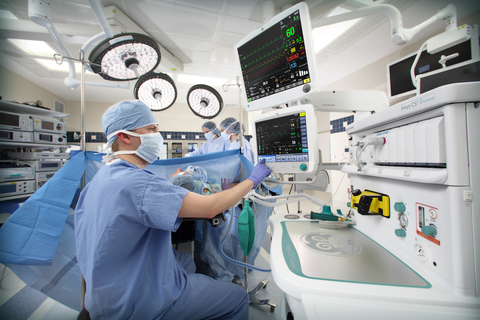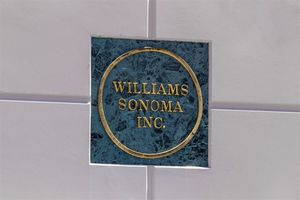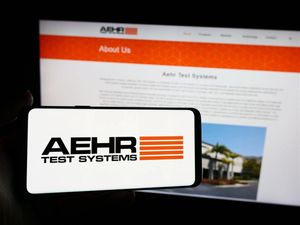- End-tidal Control software helps reduce greenhouse gas emissions and costs by cutting anesthetic agent waste
- Enables anesthesia providers to set precise targets for oxygen and anesthetic agent
- Offers increased workflow efficiencies by reducing the manual inputs providers must enter in delivering agent and oxygen
GE Healthcare announced today the FDA pre-market approval (PMA) for its End-tidal (Et) Control software for general anesthesia delivery on its Aisys CS2 Anesthesia Delivery System. GE Healthcare is the only manufacturer approved to offer general anesthesia delivery with end-tidal concentration control in the U.S. The company initially released the technology in Europe in 2010 and today, anesthesia providers use Et Control software to care for patients in over 100 countries.
This press release features multimedia. View the full release here: https://www.businesswire.com/news/home/20220404005215/en/

GE Healthcare's Aisys™ CS2 Anesthesia Delivery System with Et Control (Photo: Business Wire)
Each year more than 300 million patients worldwide undergo surgical procedures, many of them requiring general anesthesia utilizing inhaled anesthetic agents1 at a cost of $1.2 billion annually.2 The Et Control software semi-automates the delivery of anesthesia using software, allowing anesthesia providers to set targets for end-tidal oxygen and anesthetic agent. Once targets are set, the software quickly achieves and maintains those targets, regardless of changes in the patient's hemodynamic and metabolic status. The Et Control software improves anesthesia delivery accuracy and simplifies workflows while reducing drug waste, lowering the cost of care and greenhouse gas emissions.
As compared to the manual process, Et Control software may offer the following benefits:
- A potential 44% decline in greenhouse gas emissions due to more efficient use of anesthetic agents3
- Increased accuracy in maintaining the target concentrations of oxygen and anesthetic agents4
- 50% reduction in manual keystrokes, helping providers spend less time making adjustments and more time observing the patient5
- A potential 27% reduction in operating room costs due to lower anesthetic agent spend through the reduction of anesthetic agent waste3
“In the past, we continually adjusted vaporizer setting and fresh gas flow to control inspired concentration in an attempt to achieve and maintain the end-tidal concentration we wanted for our patients. To have direct control of the end-tidal concentration that reflects the drug level in the patient’s blood is a big step forward for our ability to personalize a patient’s care. Additionally, low-flow anesthesia has benefits for hospitals and the environment,” said Dr. Jim Philip, Anesthesiologist and Director of Clinical Bioengineering, Department of Anesthesiology, Perioperative and Pain Medicine, Brigham and Women's Hospital. Philip, who has been a leading proponent for approval of automated control of inhalation drug administration for years, has also served as a paid consultant for GE Healthcare from April 2020 to December 2021.
“Anesthesia providers in the U.S. will have access to the most advanced anesthesia tools available to improve patient care,” said Eric Ruedinger, General Manager of GE Healthcare’s Anesthesia and Respiratory Care business. “As the long-standing global leader in anesthesia delivery, GE Healthcare invested in the development and clinical validation of this Et Control algorithm, and we are committed to creating clinically relevant solutions that will enhance anesthesia practices into the future.”
The FDA approval was supported by the results from the U.S.-based, multi-center, multi-year MASTER-Anesthesia Trial – with over 200 patients (18 years of age and older) enrolled. The trial evaluated the safety and effectiveness of the Et Control software versus conventional anesthetic gas delivery methods during general anesthesia. With this FDA approval, GE Healthcare will launch the Aisys CS2 Anesthesia Delivery System with Et Control in the U.S in the coming months. For more information, visit www.gehealthcare.com/etc.
About GE Healthcare:
GE Healthcare is the $17.7 billion healthcare business of GE (NYSE: GE). As a leading global medical technology, pharmaceutical diagnostics and digital solutions innovator, GE Healthcare enables clinicians to make faster, more informed decisions through intelligent devices, data analytics, applications, and services, supported by its Edison intelligence platform. With over 100 years of healthcare industry experience and around 47,000 employees globally, the company operates at the center of an ecosystem working toward precision health, digitizing healthcare, helping drive productivity and improve outcomes for patients, providers, health systems and researchers around the world.
Follow us on Facebook, LinkedIn, Twitter, Instagram and Insights for the latest news, or visit our website www.gehealthcare.com for more information.
1 Weiser, T. G., Haynes, A. B., Molina, G., Lipsitz, S. R., Esquivel, M. M., Uribe-Leitz, T., Fu, R., Azad, T., Chao, T. E., Berry, W. R., & Gawande, A. A. (2016). Size and distribution of the global volume of surgery in 2012. Bulletin of the World Health Organization, 94(3), 201-209F. https://doi.org/10.2471/blt.15.159293.
2 https://www.gminsights.com/industry-analysis/inhalation-anesthesia-market.
3 Tay. S, et al. Financial and environmental costs of manual versus automated control of end-tidal gas concentrations, Anaesth Intensive Care (2013); 41: 95-101.
4 Refer to GE Healthcare Et Control Pivotal Study Report DOC2163005.
5 S. Singaravelu and P. Barclay, Automated control of end-tidal inhalation anaesthetic concentration using the GE Aisys Carestation. British Journal of Anaesthesia (2013); 110 (4): 561–6.
View source version on businesswire.com: https://www.businesswire.com/news/home/20220404005215/en/
Contacts
Paula Freund
paula.freund@ge.com
+1 414 305-1710





